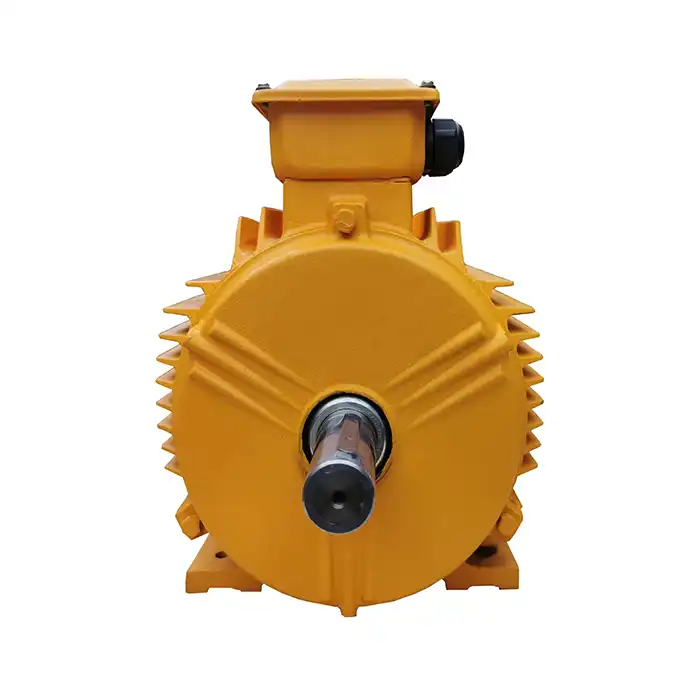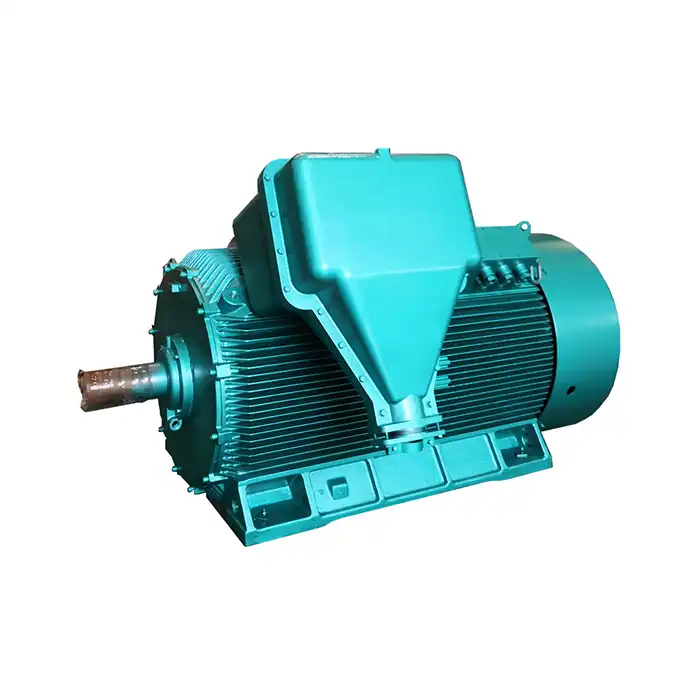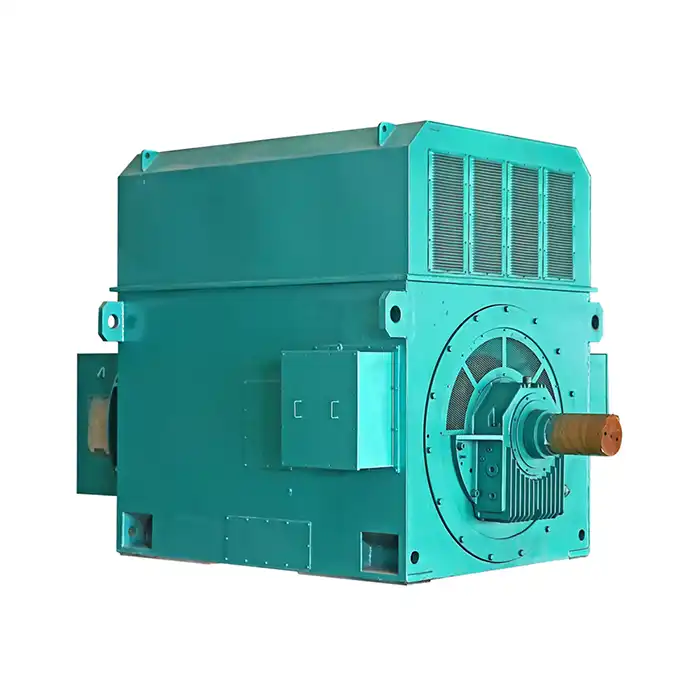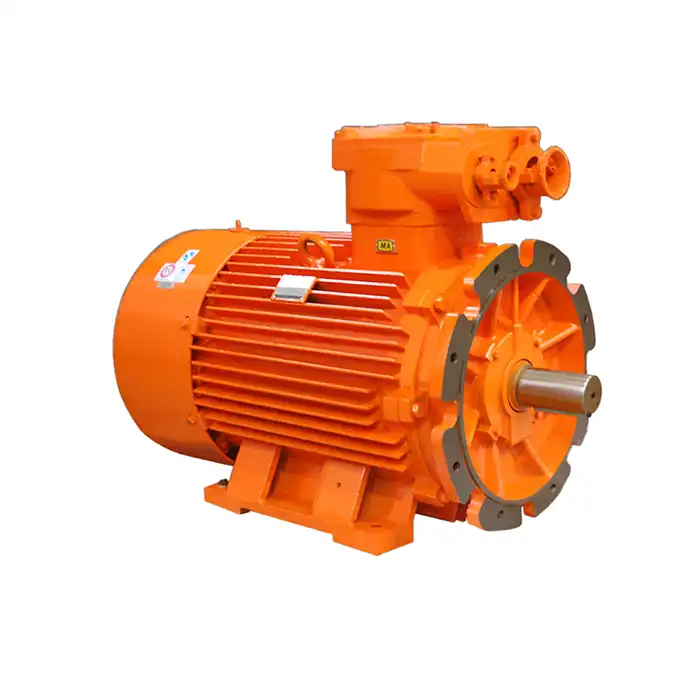How to Match a VFD with an LV Induction Motor?
Matching a Variable Frequency Drive (VFD) with a Low Voltage (LV) induction motor is a crucial step in optimizing industrial processes. The right combination can lead to improved energy efficiency, enhanced motor performance, and extended equipment lifespan. This guide will walk you through the essential considerations for pairing VFDs with LV induction motors, helping you make informed decisions for your industrial applications.
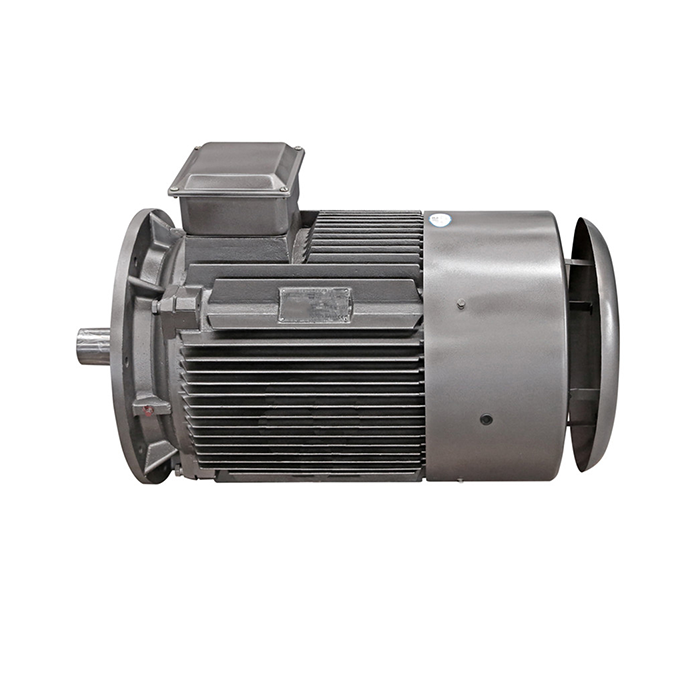
Series:YE3
Frame number: 80-450
Power range:0.75-1000kW
Protection level:IP55
Energy efficiency class: IE3
Voltage range: 380V,400V,415V,660V, etc.
Application:can be used in various fields of the national economy, such as machine tools,water pumps,fans,compressors,and can also be used in transportation, mixing, printing, agricultural machinery, food and other occasions that do not contain flammable, explosive or corrosive gases.
Certificate: international standard IEC60034-30 "Efficiency Classification of Single-speed Three-Phase Squirrel Cage Induction Motors".
Advantage:The high quality of the electric motor guarantees high operational reliability.
Others: SKF, NSK, FAG bearings can be replaced according to customer requirements.
Voltage and Current Ratings: Ensuring Compatibility
When matching a VFD with an LV induction motor, one of the primary considerations is the voltage and current ratings of both components. This compatibility is fundamental to the safe and efficient operation of the motor-drive system.
Voltage Range Matching
Proper voltage range matching is one of the most critical steps when pairing a VFD with an LV induction motor. The motor’s input voltage must be fully supported by the VFD’s output capacity to ensure consistent performance and to prevent stress on insulation and winding systems. For example, if the motor operates within a nominal range of 380V to 660V, the VFD must provide a corresponding adjustable output within this exact window. Failing to match these ranges can result in undervoltage, which leads to insufficient torque, or overvoltage, which risks overheating and damaging the motor. Careful verification of nameplate values and manufacturer specifications is therefore essential before installation and commissioning.
Current Rating Considerations
The current rating is another essential factor in ensuring the compatibility of a VFD and an LV induction motor. The VFD must be capable of supplying a current equal to or greater than the motor’s full-load current to maintain reliable operation. If the VFD is undersized, it may trip during startup or when the motor encounters heavy loads, leading to interruptions in production. Conversely, a properly sized VFD ensures stable acceleration, safe handling of varying loads, and protection against overheating. Engineers often factor in a margin above the full-load current to account for transient conditions, thereby safeguarding the motor-drive system from unexpected current spikes.
Overload Capacity
In many industrial applications, motors are subjected to conditions where temporary overloading is inevitable, such as during startup, sudden torque demands, or process fluctuations. For this reason, both the VFD and the motor must have adequate overload capacity to withstand these short-term stresses without causing system failures. Typically, VFDs are designed with overload ratings that allow them to deliver 110–150% of their rated current for a limited duration. Selecting a drive with this capability ensures that the system can handle peak loads without nuisance tripping or thermal damage. Evaluating the application’s load profile and expected duty cycle is key to choosing the right overload margin.
Motor Load Characteristics: Optimizing VFD Settings
Understanding the load characteristics of your LV induction motor is crucial for setting up the VFD correctly and achieving optimal performance.
Torque Requirements
Different applications have varying torque needs. For instance, constant torque loads like conveyors require different VFD settings compared to variable torque loads such as centrifugal pumps or fans. Analyze your motor's torque requirements and adjust the VFD accordingly.
Speed Range
Determine the speed range required for your application. LV induction motors typically operate between 500 to 3000 RPM. Ensure your VFD can control the motor speed effectively within this range while maintaining the necessary torque output.
Acceleration and Deceleration Profiles
Set appropriate acceleration and deceleration profiles in your VFD based on your application's needs. Gradual acceleration can reduce mechanical stress on the motor and driven equipment, while controlled deceleration can prevent overvoltage conditions in the drive.
Cable Length Considerations: Avoiding Voltage Drop Issues
The length of the cable between the VFD and the LV induction motor can significantly impact system performance. Long cable runs can lead to voltage drop and other issues that affect motor operation.
Voltage Drop Calculation
Calculate the potential voltage drop based on the cable length, cross-sectional area, and current draw. Ensure that the voltage at the motor terminals remains within the acceptable range for your LV induction motor, typically 380V to 660V.
Cable Shielding
Use properly shielded cables for longer runs to minimize electromagnetic interference (EMI) and radio frequency interference (RFI). This is particularly important in industrial environments where multiple electrical devices operate in close proximity.
Output Filters
Consider installing output filters for cable lengths exceeding manufacturer recommendations. These filters can help mitigate issues such as voltage reflections and common mode currents, which can damage motor insulation over time.
Grounding Practices
Implement proper grounding practices for both the VFD and the motor. This includes using low-impedance ground connections and ensuring equipotential bonding between the drive, motor, and other system components.
Conclusion
By carefully considering these factors - voltage and current compatibility, motor load characteristics, and cable length considerations - you can effectively match a VFD with an LV induction motor. This thoughtful pairing will result in a system that operates efficiently, reliably, and with minimal maintenance issues.
Remember that each industrial application is unique, and the specific requirements may vary. It's always advisable to consult with experienced professionals or the manufacturer when making final decisions about VFD and motor pairings.
Are you looking for high-quality LV induction motors for your industrial applications? XCMOTOR offers a wide range of efficient and reliable motors designed to meet diverse industrial needs. Our motors, with power outputs ranging from 0.75kW to 1000kW, are ideal for various applications in manufacturing, process control, HVAC, energy production, and more. We understand the complexities of matching motors with VFDs and can provide expert guidance to ensure optimal performance for your specific requirements. Whether you're in automotive manufacturing, renewable energy, water treatment, or any other industrial sector, we have the solutions to power your operations efficiently. Contact us at xcmotors@163.com to discuss your motor needs and find the perfect match for your VFD applications.
References
1. Johnson, M. (2022). "Advanced Control Techniques for LV Induction Motors with VFDs". Journal of Industrial Automation, 45(3), 178-195.
2. Smith, A. & Brown, B. (2021). "Optimizing Energy Efficiency in Variable Speed Drive Systems". Energy Engineering, 33(2), 89-104.
3. Lee, K., et al. (2023). "Impact of Cable Length on VFD-Motor System Performance". IEEE Transactions on Industry Applications, 59(4), 3421-3435.
4. Wilson, R. (2022). "Best Practices for VFD-Motor Matching in Industrial Applications". Industrial Systems Engineering, 28(1), 45-62.
5. Garcia, M. & Lopez, J. (2021). "Voltage and Current Considerations in VFD-Driven LV Motor Systems". Electrical Engineering Review, 40(2), 215-230.
6. Thompson, L. (2023). "Load Characteristics and Their Influence on VFD Parameter Settings". Journal of Power Electronics, 18(3), 567-582.




